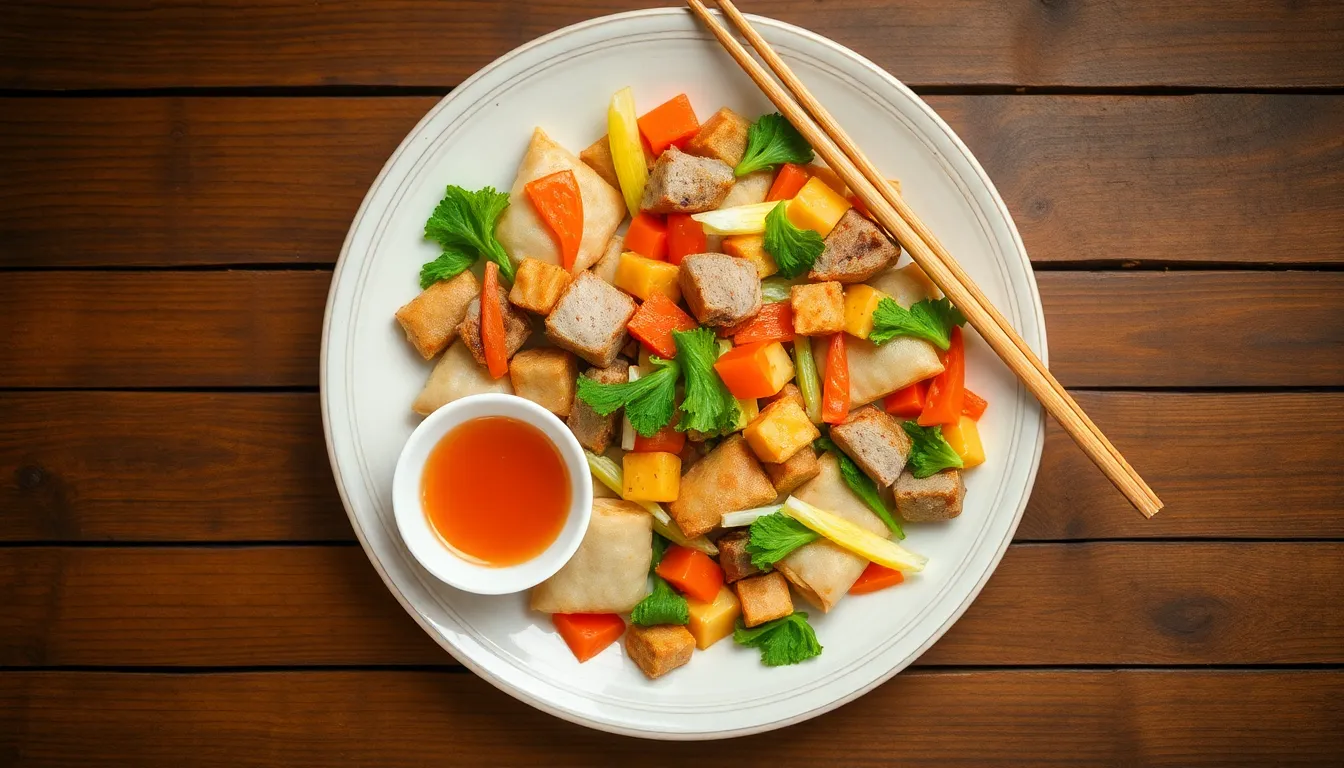Bikimsum, those delightful little bites of joy, might just be the reason your stomach feels like it’s hosting a marathon. Ever wondered why these tasty treats take their sweet time to digest? It’s not just because they’re packed with flavor; it’s a culinary conspiracy involving carbs, proteins, and a dash of culinary magic.
Table of Contents
ToggleUnderstanding Bikimsum
Bikimsum are savory snacks known for their rich flavors. These culinary delights often feature an array of ingredients that contribute to a lengthy digestion process.
What Is Bikimsum?
Bikimsum refers to a category of snacks enjoyed in various cultures. They consist of dough filled with diverse ingredients, often steamed or fried. Common fillings include meat, seafood, and vegetables. Each variant showcases unique taste profiles, influenced by regional culinary techniques. Only the freshest ingredients find their way into Bikimsum, ensuring high-quality flavors and textures. Culinary traditions often dictate the preparation methods, adding to the overall digestive complexity.
Ingredients That Impact Digestion
Several ingredients in Bikimsum affect digestion times. Carbohydrates play a crucial role, with certain dough types presenting complex starches. Proteins from meats and seafood enhance satiety, while fibers from vegetables can slow digestion. Spices and seasonings also contribute, sometimes stimulating gastric activity or causing delays. The cooking techniques used influence overall digestibility as well. Steaming tends to preserve nutrient content, whereas frying may introduce fats that elongate digestion further. Each ingredient combination creates a unique impact on how Bikimsum is processed by the body.
Digestion Process Overview

Understanding how the body digests Bikimsum helps clarify why these savory snacks take time to process. Digestion involves a series of chemical and mechanical processes that break down food into nutrients.
How Food Is Digested
Food enters the stomach and interacts with gastric juices. Enzymes and acids work together, beginning the breakdown of delicate ingredients like proteins and carbohydrates. The small intestine absorbs nutrients once food is partially digested. Here, specific enzymes continue the process by breaking down complex carbohydrates into simple sugars. With a unique mix of ingredients, Bikimsum requires longer digestion, especially due to robust proteins and fibers that maintain fullness.
Factors Affecting Digestion Speed
Multiple factors influence the speed of digestion. The combination of ingredients within Bikimsum plays a pivotal role. High-fiber components delay digestion, allowing for gradual nutrient absorption. Additionally, cooking methods like steaming and frying affect how quickly the body processes food. The texture created by these methods impacts enzymatic activity, resulting in varying digestion times. Freshness of ingredients also matters; higher quality leads to better digestion efficiency.
Why Does Bikimsum Take Long to Digest?
Bikimsum takes time to digest due to various factors, primarily involving its ingredient composition. The combination of fats, carbohydrates, and proteins significantly influences the digestion process.
High Fat Content
Fat contributes to the long digestive process. Bikimsum often includes ingredients that are higher in fat, like certain meats or oils. Fats take longer to break down compared to carbohydrates. Additionally, they slow gastric emptying, which prolongs the feeling of fullness. When consumed, these fats mix with stomach acids and enzymes, requiring more time for thorough digestion. This factor leads to a more gradual release of energy in the body.
Complex Carbohydrates
Complex carbohydrates are prevalent in the dough of Bikimsum. These carbohydrates digest more slowly than simple sugars, leading to extended digestion times. The presence of whole grains or certain starches can further complicate this process. Bacteria in the gut work on these carbs, breaking them down, which produces gases. This fermentation adds another layer of complexity to digestion. Consequently, meals high in complex carbohydrates promote prolonged satiety and a steady energy release.
Protein Sources
Protein sources in Bikimsum also play a crucial role in digestion speed. Ingredients like meat or tofu require significant enzymatic action for breakdown. While proteins are essential for muscle maintenance, they take time to digest and absorb. The mix of proteins found in Bikimsum creates a diverse amino acid profile, but this combination can slow down digestive processes. When protein-rich snacks are consumed, they trigger the secretion of digestive enzymes, which takes time for efficient processing. Hence, the unique protein sources further extend the digestion period.
Tips for Easing Digestion
Several methods can ease the digestion of Bikimsum. Implementing mindful eating practices significantly impacts digestive comfort. Chewing slowly allows the body to better break down food, making digestion easier. Taking smaller bites reduces the workload on the digestive system, ensuring smoother processing. Additionally, maintaining good posture during meals contributes positively, as it allows for optimal food movement through the digestive tract.
Pairing Bikimsum with specific foods can also enhance digestion. Foods rich in enzymes, such as pineapple or papaya, can assist in breaking down proteins and speeding up the digestion process. Including light salads or fermented foods, like kimchi, offers beneficial probiotics that support gut health. Drinking herbal teas, such as ginger or peppermint, after enjoying Bikimsum promotes digestive comfort. Integrating these practices can lead to a more pleasant eating experience and a quicker recovery from the feeling of fullness.
Bikimsum’s extended digestion time is a result of its rich ingredient composition and culinary techniques. The combination of high proteins and complex carbohydrates plays a crucial role in how the body processes these snacks. This unique mix not only contributes to a prolonged feeling of fullness but also highlights the intricate nature of these savory treats.
By understanding the factors that influence digestion, individuals can make informed choices to enhance their eating experience. Incorporating mindful eating practices and pairing Bikimsum with specific foods can promote better digestion and comfort. Enjoying these delightful snacks becomes even more rewarding when one is aware of their complex digestive journey.
